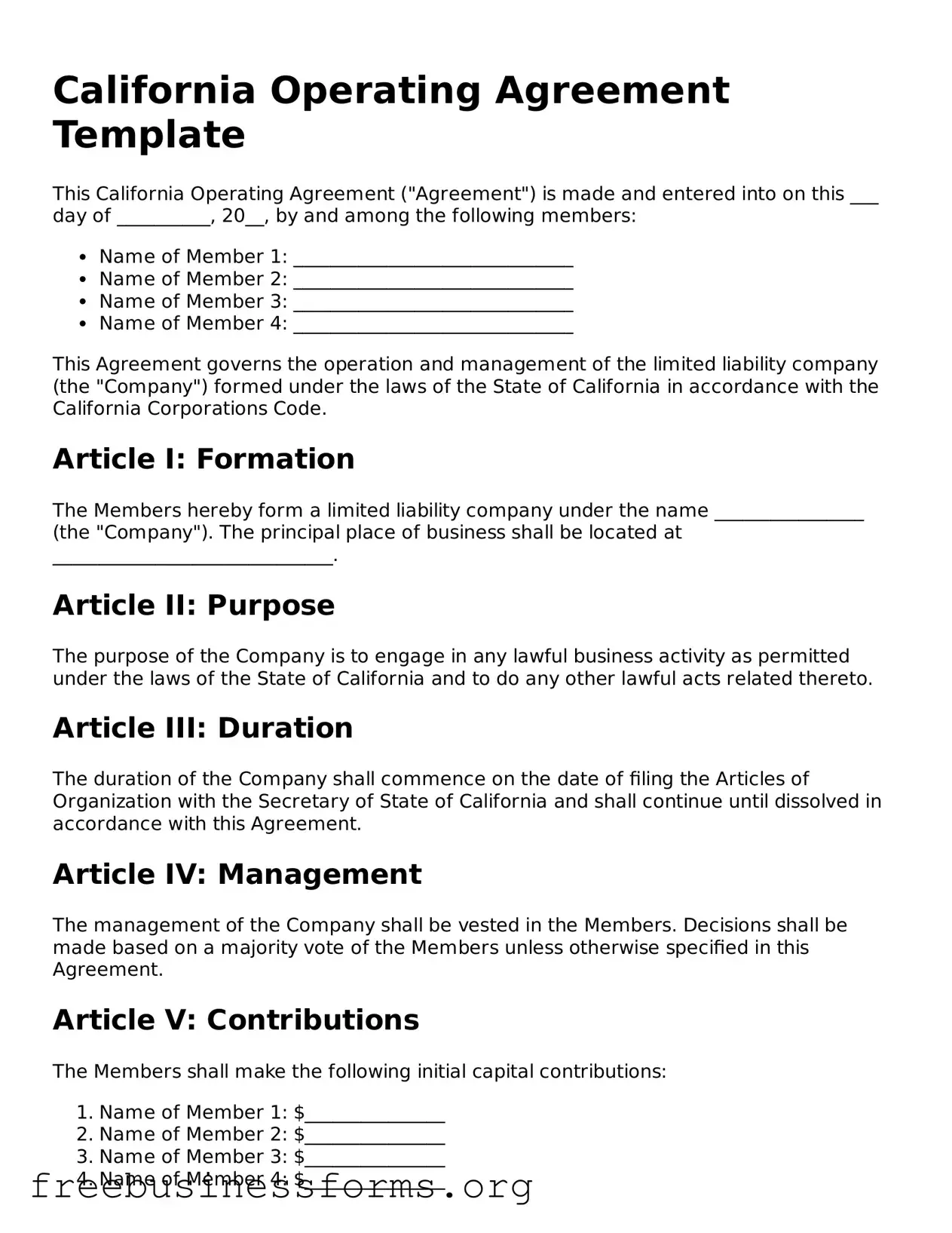California Operating Agreement Template
This California Operating Agreement ("Agreement") is made and entered into on this ___ day of __________, 20__, by and among the following members:
- Name of Member 1: ______________________________
- Name of Member 2: ______________________________
- Name of Member 3: ______________________________
- Name of Member 4: ______________________________
This Agreement governs the operation and management of the limited liability company (the "Company") formed under the laws of the State of California in accordance with the California Corporations Code.
Article I: Formation
The Members hereby form a limited liability company under the name ________________ (the "Company"). The principal place of business shall be located at ______________________________.
Article II: Purpose
The purpose of the Company is to engage in any lawful business activity as permitted under the laws of the State of California and to do any other lawful acts related thereto.
Article III: Duration
The duration of the Company shall commence on the date of filing the Articles of Organization with the Secretary of State of California and shall continue until dissolved in accordance with this Agreement.
Article IV: Management
The management of the Company shall be vested in the Members. Decisions shall be made based on a majority vote of the Members unless otherwise specified in this Agreement.
Article V: Contributions
The Members shall make the following initial capital contributions:
- Name of Member 1: $_______________
- Name of Member 2: $_______________
- Name of Member 3: $_______________
- Name of Member 4: $_______________
Article VI: Distributions
Distributions of profits and losses shall be allocated among Members in proportion to their respective ownership percentages unless otherwise agreed upon in writing.
Article VII: Indemnification
The Company shall indemnify each Member against any losses or claims incurred in connection with the Company's activities, provided such indemnification shall not apply to matters arising from the gross negligence or willful misconduct of the Member.
Article VIII: Amendments
This Agreement may be amended only by a written agreement signed by all Members.
Article IX: Governing Law
This Agreement shall be governed by and construed in accordance with the laws of the State of California.
IN WITNESS WHEREOF, the undersigned have executed this Agreement as of the date first above written.
___________________ ___________________
Signature of Member 1 Signature of Member 2
___________________ ___________________
Signature of Member 3 Signature of Member 4
